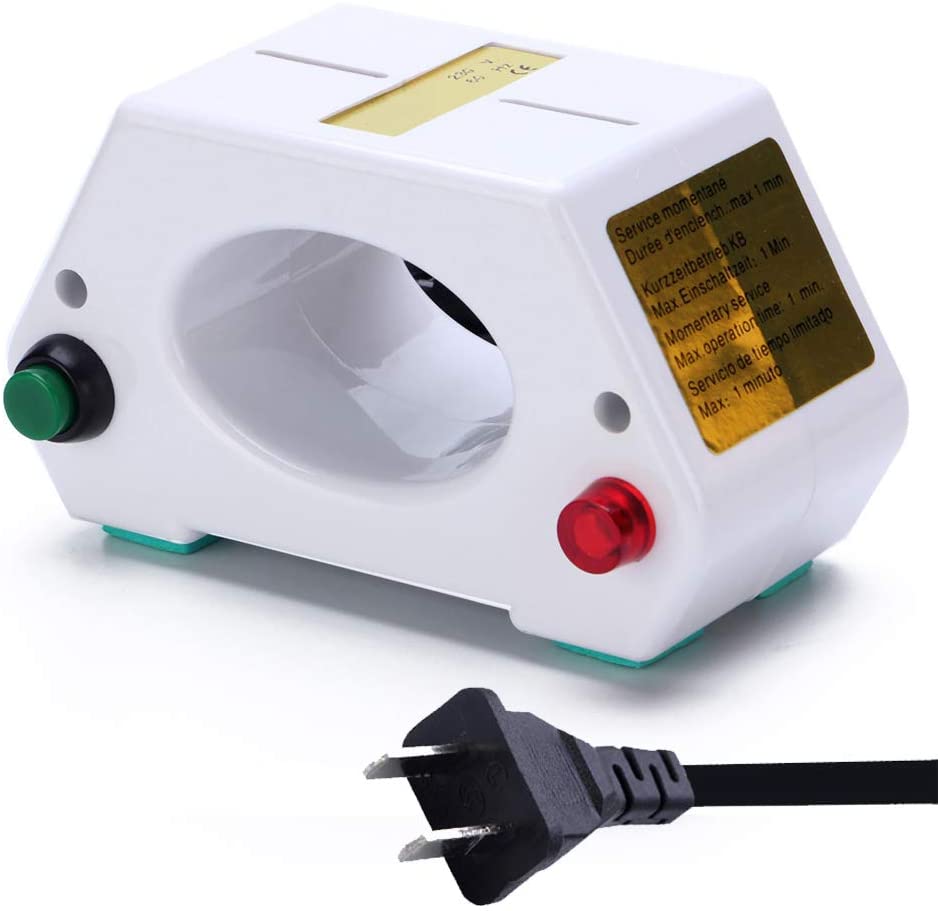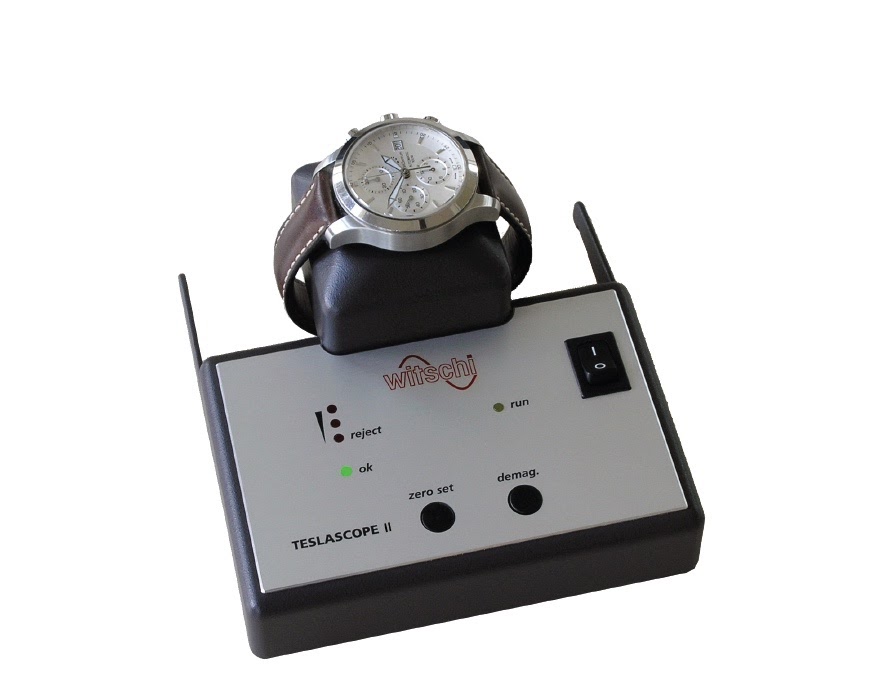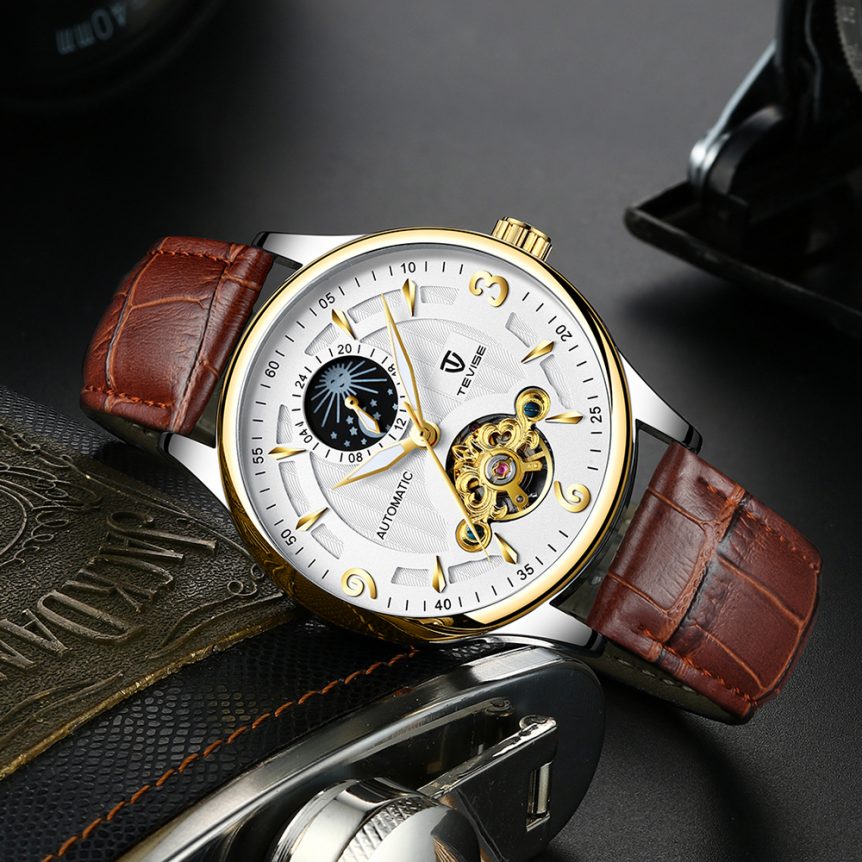Anything that becomes magnetised can slowly become demagnetised without intervention. However, a watch could remain magnetised for months or years, keeping it from functioning properly.
Fortunately, demagnetising a watch is often a simple process.

A degausser machine is used to decrease or eliminate the magnetic field in an object, such as a mechanical watch or analogue watch.
These machines are affordable and available for home use.
You can also take your watch to a watchmaker, as most watchmakers have degaussing equipment and experience dealing with magnetised watches.
The risk of magnetism and the effects on the accuracy of timekeeping depend on the type of watch.
Mechanical watches are more likely to become magnetized compared to other types of watches. Common causes of magnetism include exposure to large speakers, electrical equipment, medical equipment, television monitors, and microwave ovens.

Why Are Magnets Important in Watches?
Magnets are only important in analog quartz watches. The quartz movement depends on a small magnetic stepper motor. The motor has a coil that creates a small magnetic field.
A small current is sent to a coil in the motor to temporarily magnetize it. This temporary magnetism powers the stepper motor, allowing the timepiece to continue ticking.
Placing an analog watch near a strong magnetic field, such as a speaker, can interfere with the normal operation of the stepper motor. The watch may start acting erratically and stop keeping time properly.
While analog watches require a small magnetic field, too much magnetism may cause the stepper motor to work too quickly or slowly, leading to an increase or decrease in timekeeping.

Luckily, magnets do not permanently damage analog watches. As soon as you move the watch away from the magnet, the stepper motor should start working normally.
Other types of watches may suffer from magnetism. For example, mechanical watches have small hairspring coils. When exposed to magnetism, the hairspring coils stick together.
When the coils stick together, the length of the hairspring is effectively shorter. This causes the watch to gain time. You may notice that each day your mechanical watch is slightly further ahead compared to the previous day.
In some cases, the hairspring coils in the mechanical watch may become completely stuck due to magnetism. This keeps the watch from working at all.
Part of the problem comes from the various steel components in the mechanical watch. Steel can retain magnetism after leaving a magnetic field. As mechanical watches can retain magnetism, they may need to be demagnetized occasionally.
Watch manufacturers have tried to combat magnetism by replacing steel components with components made from other alloys.
For example, instead of steel, a watch manufacturer may use aluminum components to limit the watch’s ability to retain magnetism. These watches are often marketed as “magnetic resistant” watches.
Digital watches do not suffer from the same problems, as they do not have motors or mechanical parts. The electronic components and digital display are not typically affected by magnetism.

What Happens to the Watch If it Is Demagnetized?
Demagnetising a watch helps it keep accurate time. When a watch becomes magnetised, it may run a few minutes fast or slow or stop altogether.
Analogue watches rely on a magnetic force to power the step motors. The motors are small and easily influenced by magnetism when placed near a magnetic source.
If you move the watch away from the magnet, it should resume normal operation without the need to demagnetise it.
Mechanical watches are also impacted by magnetism.
Unlike analogue watches, mechanical watches can remain magnetised after removing it from the source of magnetism.
To correct the problem, you need to demagnetise the watch.
There are anecdotal evidence that some watches can demagnetize themselves over months or years; but this likely not an acceptable waiting time for most people.

